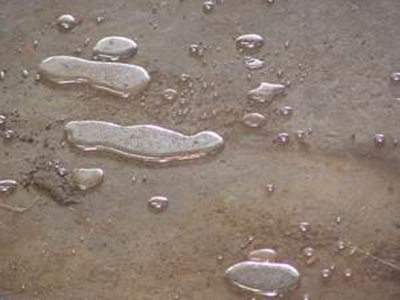|
DIVULGAÇÃO
Mercury emissions total 1.5 million tonnes over last 500 years. In the past 500 years, mining and other human activities have released nearly 1.5 million tonnes of mercury into the environment, according to researchers in the US. In wide-ranging estimates of the amount of mercury released by humans in different regions of the world, the team found that most of the pollutant has not been sequestered naturally, but remains mobile.  Image courtesy: Public Domain.
Mercury, which is a liquid in its elemental form, has been used for centuries to aid gold and silver mining, as well as other industrial processes. It is toxic and can damage the nervous system, the kidneys and lungs. Historically, many gold and silver miners are believed to have suffered mercury poisoning. Where mercury is still used for extraction today – in small-scale mines in Africa and elsewhere – miners are still at risk. But mercury is also mobile. After experiencing chemical reactions, it can easily propagate through air and water; in air, it can travel for up to six months. One of the most dangerous pathways for mercury poisoning for humans is by eating large fish such as tuna, which concentrate the methylmercury they ingest from smaller fish and shellfish. Infamously, due to the release of methylmercury in industrial wastewater from a chemical factory of the Chisso Corporation from the 1930s to the 1960s, thousands of people who ate fish and shellfish in the region of Minamata, Japan, contracted severe mercury poisoning. In recent years, 110 countries signed up to the Minamata Convention to protect people and the environment from mercury emissions. To estimate how much mercury has been released over time, Streets and colleagues from Argonne and other US institutions collected historical data on production for various industries in different parts of the world, then multiplied them by the emission rates of mercury for those industries. Most mercury in the past half-millennium has been released in Europe, they found, totalling nearly 430 thousand tonnes, and in North America, to the tune of some 410 thousand tonnes. That said, since the 1970s emission has declined in these continents due to concerns over risks to health and environment. South America, too, has been a big emitter, but with more than 60% of its emissions occurring before 1850. “We were perhaps a little surprised that pre-1850 emissions were as large as they turned out to be,” says Streets. Streets and colleagues also found that – in contrast to South America – Africa, the Middle East and Oceania have been relative latecomers to mercury pollution, emitting most of their mercury since 1850. By 2010, the endpoint of the analysis, Asia was the greatest emitter. The researchers believe the implementation of the Minamata Convention – an international treaty on mercury pollution adopted in 2013 – should emphasize reductions in small-scale mines and uses of mercury in products; the careful treatment and disposal of mercury-containing wastes; better control of air emissions from coal combustion; and the general modernization of industrial processes. “These are the easiest and best ways to get mercury out of the environment and reduce human exposure,” says Streets. Streets and colleagues reported their findings in Environmental Research Letters (ERL). PhysicsWorld. Accessed: Oct 05, 2019. |
||||||||||||||||||||||||